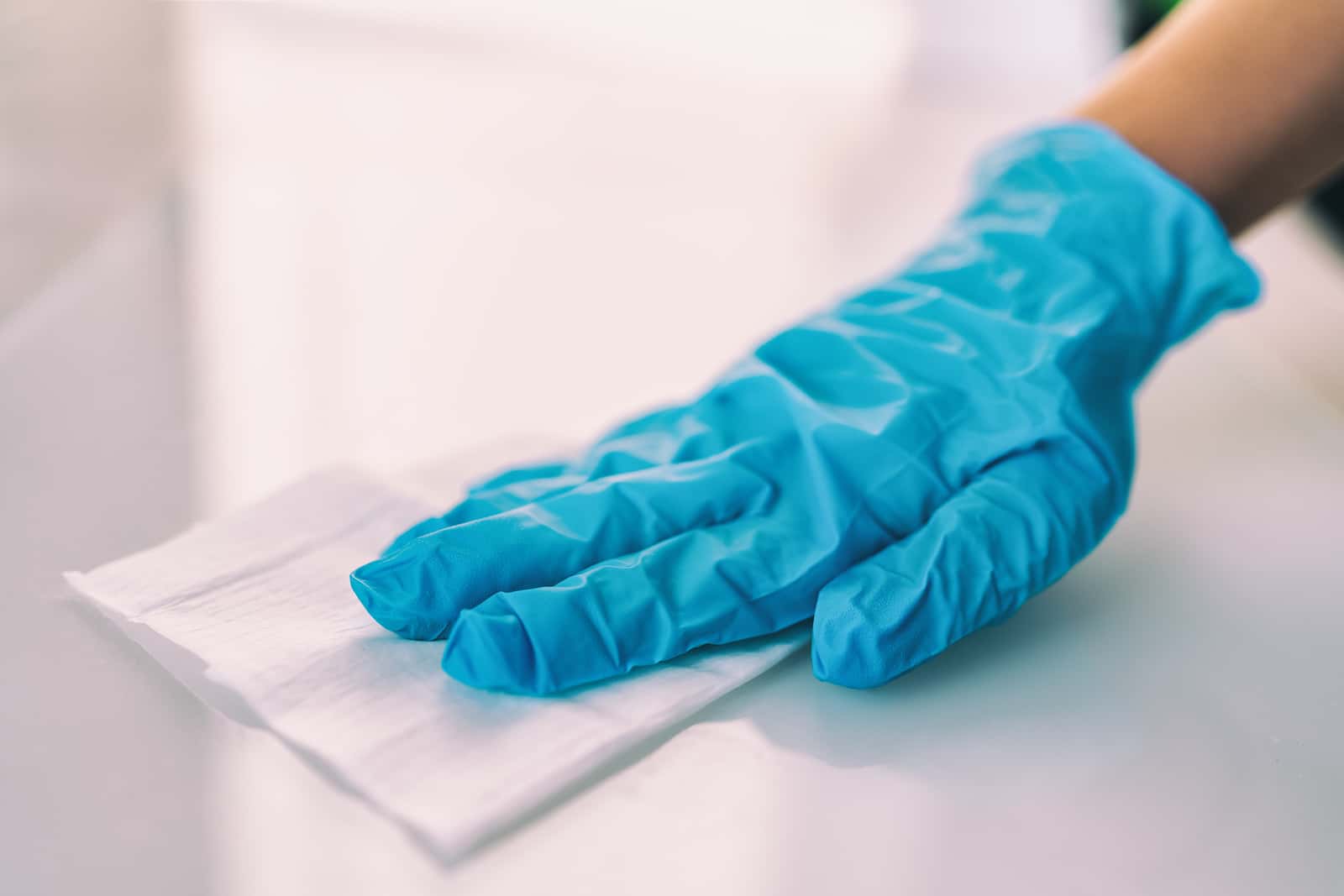
As the novel coronavirus SARS-CoV-2 spreads around the globe, we are exhorted to slow its relentless march with basic public health steps. Staying at home, washing our hands, maintaining physical distance among us and disinfecting doorknobs and other high-touch surfaces can flatten the curve of COVID-19 infection. You know how to wash your hands. Staying at home may be a challenge, but you know how to do that, too. What about disinfection technique?
Your Guide to Disinfecting Doorknobs:
Q. We have heard that we should be disinfecting doorknobs and other things that might have become contaminated with the coronavirus. All the disinfectant wipes and sprays disappeared from grocery shelves a few weeks ago.
Is it true that you could use a bleach solution? How would you do that?
A. The CDC has offered advice on disinfecting doorknobs, cabinet pulls, light switches, faucet handles and other frequently touched objects at home. Clean the surface first with ordinary soap and water. Then disinfect with a freshly-made bleach solution. The proper ratio is 5 tablespoons bleach per gallon of water, or 4 teaspoons bleach per quart. Remember that it is only good for 24 hours, so should be made up fresh each day.
Be sure to wear gloves to protect your hands while cleaning. If the gloves are not disposable, wash them well before removing them. (You did wash your hands before putting the gloves on, didn’t you? That keeps the insides from getting contaminated.) Then wash your hands after you remove the gloves, whether they are disposable or not.
More Info on Disinfecting Doorknobs:
Q. When you spray bleach solution on a doorknob, how long does it take to disinfect? I recall from an online class that you should leave the spray on for at least 5 minutes before you wipe it down. Is that correct?
It would be helpful if you could do an article or maybe provide a CDC-approved link that would give specific and accurate info on exactly how to properly disinfect a doorknob or any surface. Is there any other way to disinfect a doorknob or other surface besides using bleach?
A. You are correct that a bleach solution of 4 teaspoons per quart should be left on the doorknob or tap handle for five minutes. That is adequate for disinfection. The CDC offers its guidance on a page called Cleaning and Disinfection for Households. The maker of the most widely used brand of bleach, Clorox, offers detailed information on mixing solutions of different strengths of bleach to the correct dilution. Not all household bleach is equally powerful.
The head of scientific research for Homeland Security, William Bryan, described tests conducted at the National Biodefense Analysis and Countermeasures Center. The dilute bleach solution kills the coronavirus in 5 minutes. Isopropyl alcohol (70 percent) kills it in about 30 seconds.
Caveats:
Above all, do not ingest bleach or get it on your skin. Use plain water to rinse off any food preparation surfaces you have disinfected with bleach solution. Also, do not use bleach solution on your clothes, rugs, curtains or upholstery. It could ruin them. Instead, wash sheets or clothing on the warmest setting indicated on the label. Use gloves to handle soiled items that a sick person has used and wash your hands thoroughly (20 seconds) after removing the gloves.
Remember never to mix bleach or a bleach solution with any other cleaning products. Doing so can create a deadly problem.
One reader also asked:
“When you spray that bleach solution on a doorknob, how long should you leave it on?”
You should scrub the item, wet it with disinfectant and then let it dry on its own. Don’t wipe the solution off.
Using Alcohol Instead of Bleach for Disinfecting Doorknobs:
If you don’t have bleach, but you have rubbing alcohol, that will work. You’ll want a 70% solution of isopropyl alcohol. Let it sit on a previously cleaned surface for at least 30 seconds to destroy the envelope of the virus. This type of alcohol may be used on metals such as tap handles. Plain bleach may damage metal over time.
Hydrogen Peroxide as a Substitute:
According to Consumer Reports, you can also use household hydrogen peroxide for disinfecting doorknobs. Like alcohol, it too can be used on metal surfaces. Use it undiluted, and let it sit on the surface for at least one minute. Be careful and don’t use hydrogen peroxide on clothing and upholstery. It will discolor them.
Let us know what you are using to disinfect your high-touch surfaces.

